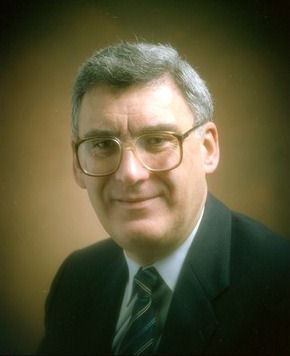Rank Flight Sergeant Years of service 1919–1941 | Service/branch Royal Air Force Allegiance United Kingdom Name Frank Sumner | |
 | ||
Born 12 October 1902
London ( 1902-10-12 ) Died 30 November 1941(1941-11-30) (aged 39)
Over Kiel, Germany | ||
Commonwealth War Grave Kiel War Cemetery | ||
Flight Sergeant Frank Sumner, was a British RAF air gunner during World War II and flew combat missions during the Battle of Britain. He is counted amongst those airmen known as "The Few". He was killed in action in November 1941 whilst on active service with RAF Bomber Command.
Contents

Early life
Frank Sumner was born in South London on 12 October 1902. He joined the Royal Air Force aged 16 as a boy recruit in February 1919.
In October 1922 Sumner went to the RAF Armament and Gunnery School at RAF Eastchurch on the Isle of Sheppey for ground and air instruction on the Lewis Gun. After successfully completing the air gunner training successfully he was awarded a brass 'Winged Bullet', worn upon the right sleeve of his RAF tunic.
Fighter Command and the Battle of Britain
Sumner joined his first unit, No. 64 Squadron RAF, part of RAF Fighter Command, at RAF Church Fenton on 6 September 1939 as a Leading Aircraftsman. He was selected to become an air gunner in the Bristol Blenheim aircraft using the Vickers K machine gun. He flew his first flight as an operational air gunner on 6 December 1939.
Sumner and 64 Squadron were detached to RAF Evanton in late 1939 to provide fighter protection to the Home Fleet of the Royal Navy. The squadron returned to RAF Church Fenton in mid-January 1940 and continued on daylight patrols and night sorties. The squadron converted to Spitfires. As a gunner Sumner was now posted to No. 23 Squadron RAF at RAF Wittering on 20 May 1940 to continue air gunner duties in Blenheims, but with a change to night-fighting. He flew operational missions with a variety of pilots during his time on the squadron.
Bomber Command
In November 1940, Sumner was offered to retrain as a radar operator, but he chose to remain in the trade of air gunner and joined RAF Bomber Command. He undertook training at No. 15 Operational Training Unit (OTU) at RAF Harwell to be a tail gunner in the Wellington bombers using the M1919 Browning machine gun.
Sumner was posted to No. 142 Squadron RAF at RAF Binbrook in December 1940 and joined the crew of Wing Commander William Sadler and second pilot (known as '2nd Dickie') Pilot Officer George Bull. The first bombing sortie Sumner took part in was on 3 May 1941 for an attack on Rotterdam in the Netherlands. Sadler was posted to work at the Air Ministry, so Bull became Captain, and the new '2nd Dickie' was Sgt James Pattison, the rest of the crew consisting of Sumner, observer Maurice Jacoby and the two wireless operator/air-gunners Thomas Harrower and John Parkin.
The crew took part in raids deep inside Germany to major cities including Bremen, Cologne, Duisburg, Düsseldorf, Hamburg, Rostock, Stettin, Vegesack and Berlin. After these raids and on European ports and harbours, including Antwerp, Brest and Lorient, Sumner was close to completing his 30 'ops'. Whilst he was in Bristol working with the contractor improving the gun turrets, Sumner's crew took part on a raid on Hamburg and did not return and were listed as missing, later killed in action.
Final mission
142 Squadron moved to RAF Grimsby in November 1941 and Sumner joined a new crew consisting entirely of non-commissioned airmen. The crew, consisting of Sgt Alexander Gilmour (Captain), Sgt John Lucking (2nd Pilot), Sgt William Lewis (Observer), Sgt John Saunders (W/Op A/G), Sgt Jesse Butterworth (Front A/G) and Flt/Sgt Frank Sumner (Tail A/G), flew together on their first raid on 30 November.
Two of the squadron's aircraft failed to return from this mission, one of which was Sumner's. The Squadron Order of Battle simply states, "This aircraft failed to return. No W/T communication at all". Later news came, via the German authorities, that the crew of a Wellington, which had been shot down by German Naval Artillery (coastal flak) near Kiel had been recovered and buried at the local Garrison Cemetery.
It was after the war had finished that Sumner and the crew's bodies were exhumed and identified and interred in the Commonwealth War Graves Commission cemetery at Kiel.
